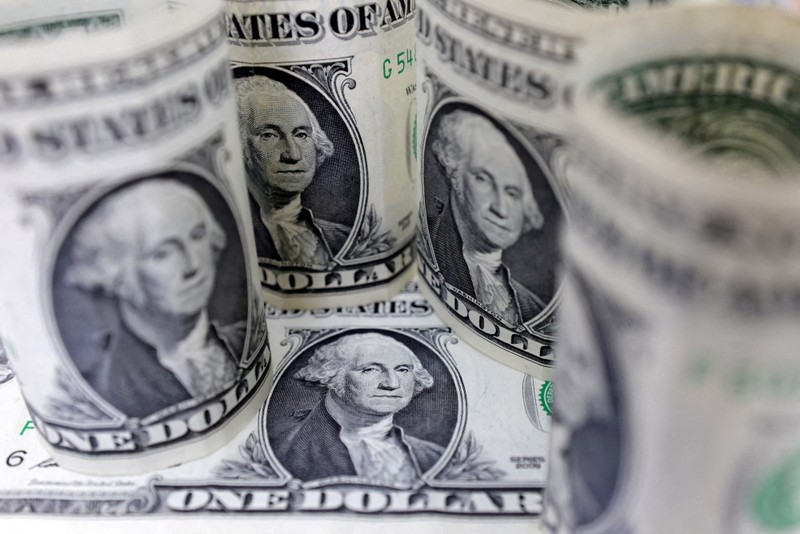The trend of de-dollarization is spreading
The USD has held its dominant position for many years. In 1971, then-US Treasury Secretary John B. Connally once said: “The dollar is our currency but it is your problem.”
In the long term, many economists are skeptical about the USD’s ability to sustain itself in a context where the world is in increasingly deeper polarization. Over the past 50 years, that problem has become more and more apparent as many countries worry that the US may “weaponize” the USD.
The trend of de-dollarization has been brewing for a long time and has rapidly spread in recent years. Many countries around the world are even joining together, finding ways to diversify their currencies and reduce their dependence on the US greenback.
Many countries are concerned that the US could “weaponize” the USD (Photo: Unsplash).
This situation is most clearly shown when looking at the reserve funds of Central Banks.
According to statistics from the International Monetary Fund (IMF), at the end of 1970, among global reserve currencies, the USD accounted for up to 85%. By the end of 2022, this rate has decreased to only 58.4%.
China is one of the countries leading the global de-dollarization trend. China has used the yuan to pay for almost all of Russia’s oil purchases in 2022. Since the Russia-Ukraine conflict broke out, ruble and yuan transactions have increased 80 times.
In addition, China also has the ambition to trade oil with Saudi Arabia and West Asian countries in yuan to break the long-standing system of buying and selling oil in USD.
According to professor Ashok Swain at Uppsala University (Sweden), trading oil in yuan will be a big step forward for China, and at the same time a significant step backward for the position of the USD. .
Shelter tool
Many experts believe that a weak USD is good news for countries that depend on imported goods as well as for countries that have to pay debt in USD. However, American businesses and consumers will have to pay more for imported goods.
Dollar Index increased sharply from July to October, with more than 7%. The reason is a series of positive data on the US economy, causing many investors to predict a high possibility that the US Federal Reserve (Fed) will keep interest rates unchanged.
However, recently, the US economy has shown signs of slowing down. This makes investors think that the Fed will complete the process of raising interest rates and cutting interest rates soon.
Ulrich Leuchtmann, director of foreign exchange research at Commerzbank, predicts that the USD will likely weaken for another two quarters, especially as there is more clear evidence that the Fed will reduce interest rates.
Cameron Willard, a member of the capital markets research team at Handelsbanken (Sweden), forecasts that the USD will continue to decline in the first half of 2024. However, if geopolitical risks increase, the downward trend may reverse. .
During times of instability, investors often consider the USD as a safe haven. They believe that their assets will preserve their value.
“I don’t think the USD will lose value in the long term. For that to happen, we need to have a reliable alternative currency. But the USD is still the world’s reserve currency and a safe currency.” “I don’t think this can change anytime soon,” Willard shared with CNN.
Winners and losers
For countries dependent on imported goods, a weak USD means they have to pay less for essential products such as wheat or crude oil. This will help cool inflation in these economies.
Japan, South Korea, India, and many euro zone countries that rely on imported goods will be the countries that benefit, according to Mark McCormick, director of foreign exchange at investment bank TD Securities.
Besides, export companies in the US also benefit, because the price of their products will be cheaper when converted to other currencies. Goods are therefore more competitive abroad.

A weak USD will be like a rising tide, lifting all ships high (Photo: Reuters).
Director of foreign exchange research at Commerzbank Mark McCormick said that imported goods into the US will also be more expensive, helping US businesses selling domestic goods compete better with foreign competitors.
Experts say this is also good news for emerging markets. Many countries currently borrow in USD, so when this currency is weak, it will help them repay debt more easily.
A weaker USD also increases investment opportunities outside the US. “In general, a weak USD will be like a rising tide, lifting all ships,” commented Mark McCormick.
However, American consumers feel unhappy when the dollar weakens because they will have to pay more for imported goods and trips abroad.
“Basically, a weak dollar will make Americans a little poorer, because they have to pay more for imports, and get less for exports,” said Director of FX Research at Commerzbank. said.
If other factors remain the same, a weak USD will cause inflation in the US to accelerate. However, inflation also depends on many other factors. Handelsbanken (Sweden) also believes that the cooling of the US job and real estate market can help curb inflation, even though imports increase.
Is USD still “king”?
Despite de-dollarization efforts by countries, led by China and Russia, the USD remains firmly in the top position.
At the International Financial Forum taking place at the end of October, financial experts and economists said that up to now, there is still no reliable alternative to the USD despite the de-dollarization efforts of China and other countries.
The latest assessment from the People’s Bank of China (PBOC) also points out that the yuan still has a long way to go before it can put pressure on the USD’s dominance.
PBOC analysis shows that the proportion of the RMB in global payments, trade finance and central bank reserves is still far behind the USD despite recent growth, about 60%. Foreign and international currency claims and liabilities are still denominated in USD.
The USD remains the de facto dominant currency in the largest stock and bond markets globally. The USD is also the most used in the SWIFT system, carrying out more than 42 million transactions/day with an average value of nearly 5,000 billion USD/day.
Former Central Bank of Malaysia Governor Nor Shamsiah said that dependence on the USD is not something that other countries can easily overcome. According to her, the ambition to develop a common currency in the region is driven by increased trade in the region, not by the trend of de-dollarization.
However, according to analysis organization International Banker, for most countries, the most important goal, at least for now, is not to replace the USD as the world’s leading reserve currency. . Their goal is to achieve sufficient currency diversification, avoiding being greatly affected by US economic and trade-related sanctions.

